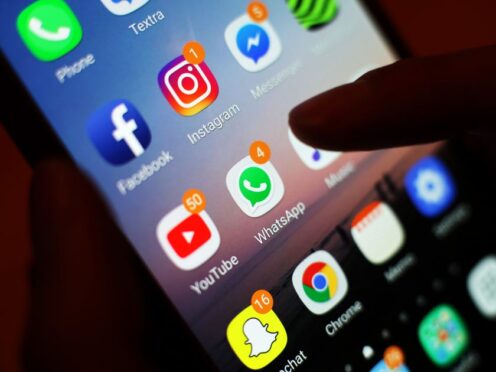
The UK’s data protection regulator has urged social media and video-sharing platforms to do more to protect children’s privacy online.
The Information Commissioner’s Office (ICO) has set out its priorities for protecting children’s personal information online for the next year, focusing on location data, targeted advertising, recommendation algorithms, and using the data of under-13s.
Information Commissioner John Edwards said that while there has been progress since the introduction in 2021 of the children’s code of practice – which guides platforms on how to protect the data of children – some areas still need work, including those named as priorities for the coming year.
“Children’s privacy must not be traded in the chase for profit. How companies design their online services and use children’s personal information have a significant impact on what young people see and experience in the digital world,” Mr Edwards said.
“Seven out of 10 children told us that they trust our children’s code to make the internet better and safer for them. That’s why our determination to ensure online services are privacy-friendly for children is stronger than ever.
“I’m calling on social media and video-sharing platforms to assess and understand the potential data harms to children on their platforms, and to take steps to mitigate them.”
As part of its children’s code strategy for the next year, the ICO said it will focus on ensuring online services make children’s profiles private by default, with geolocation settings also turned off by default.
The regulator said it will also urge platforms to focus on ensuring targeted advertising is turned off by default, as well as work closely with platforms to examine the use of recommendation algorithms for younger users.
Finally, the ICO said it will examine how services use age assurance technologies and gain parental consent around the use of information relating to children under the age of 13.
The announcement of the ICO’s priorities comes as the Information Commissioner attends the IAPP Global Privacy Summit in Washington DC.
He will also travel to Seattle and San Francisco to meet tech firms and artificial intelligence (AI) developers, and reiterate the ICO’s regulatory expectations over child privacy as well as emerging technologies such as generative AI.
“Children’s privacy is a global concern, and businesses around the world need to take steps to ensure children’s personal information is used appropriately so it doesn’t leave them exposed to online harms,” Mr Edwards said.
“This week I will be meeting with international regulators and online services to encourage stronger digital protections for children.”

Enjoy the convenience of having The Sunday Post delivered as a digital ePaper straight to your smartphone, tablet or computer.
Subscribe for only £5.49 a month and enjoy all the benefits of the printed paper as a digital replica.
Subscribe